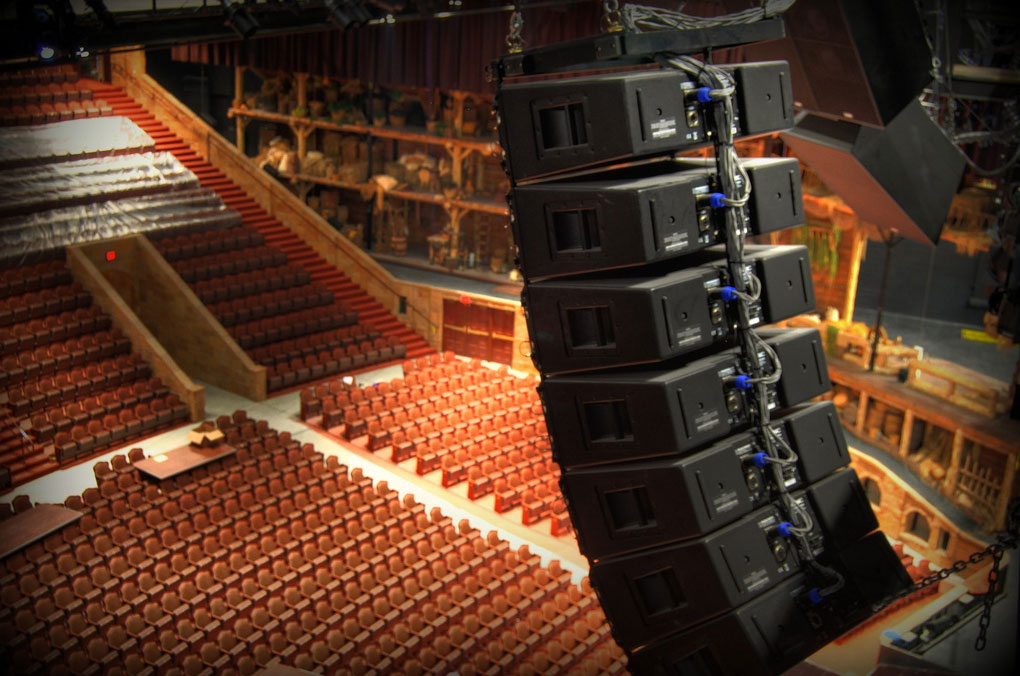
When running sound for a production, it’s important that the mix you hear is as close to what the audience experiences as possible. That’s not always very easy, as the mixer may be located where it’s out of sight instead of where the optimal mix position is. There are some things you can do, however, to help give your audience a better sounding show.
Open the booth window
Although it lets you personally make more noise, you can’t know how your show sounds if you’ve got a piece of glass between you and the house. Open those windows as far as they’ll go. If the opening isn’t very big, don’t be afraid to get out of your chair and stick your ear right up by the window when needed. If there are no windows that open, try to run sound from somewhere else; you absolutely need to hear.
Don’t use a monitor
It may be tempting to put a speaker in the booth that’s connected to a microphone in the house. This doesn’t really work, though. Since you can turn the monitor’s volume up and down, any sound level you hear will be arbitrary. Even if the microphone is in the house, it will still pick up a different mix than the audience will. A hanging mic may be closer to the main speaker and farther from the actors than any of the seating positions are. A mic on a stand in front of the stage will be closer to the actors. Any sound system will color sound, so no matter where you place the mic it won’t provide an accurate representation of the sound in the house.
Get rid of noise sources
Any loud equipment or fans you have within earshot will make it harder to hear other sounds. They may cause you to mix things louder than they need to be, or they could completely mask sounds that the audience can hear clearly as they are probably closer to the main speakers than you are. You are unlikely to notice a hum coming through the speakers if you have a computer humming away right next to you. Whatever the source of the noise, get some long cables and move it away from you.
Speaking of noise sources…
Tell the rest of the crew to be quiet
There’s a lone actor on the stage, singing her heart out during your show’s haunting love theme. You are trying to make a subtle change to the mix that will perfectly capture the mood of the song, when suddenly the other techies in the booth burst into laughter. You can’t hear over them, and now you’re distracted by the idea that you may have missed something funny.
Chit chat on the headsets is never a great thing during a show, but there are some times where it is more appropriate than others. You need to train the other techies that while you’re mixing is not a good time and that they need to be quiet so you can hear.
Don’t let your headset interfere
Try to use a headset with only one muff. This leaves one ear open at all times, so even when you’re not in a cue you can hear if something unexpected happens. If you need to hear better during a cue, pull the headset off of your other ear. Just be sure to let the stage manager know that you’re going to be off headset for a few minutes.
Walk the house
No matter how you set things up, a show is going to sound different from the audience seating than it does from the booth. Even different parts of the house will experience different sound. You should learn to estimate what the audience is hearing based on what you hear from your mix position.
Play some music. Adjust the level to where you think it would be good for underscoring or for a song background or whatever you are trying to accomplish. Now go down into the audience and listen to how the sound there compares to what you heard from the booth. Is it louder? Does it have more high-end? Walk around the whole house, making note of the way the sound changes as you do.
Now go back to the mixer and adjust the levels so that things sound the way you want in the house. Listen to that sound from the booth. You now know what you’ll be hearing from your position when you have things adjusted just right for the audience.
Good sound supports a performance in a way that almost goes unnoticed, but bad sound has the power to completely ruin a show. It’s tempting to set your sound levels to the numbers you think they should be set to and then check out until your next cue, but as a sound operator, you want good sound. To get that good sound, it’s important to know exactly what the audience is hearing.
